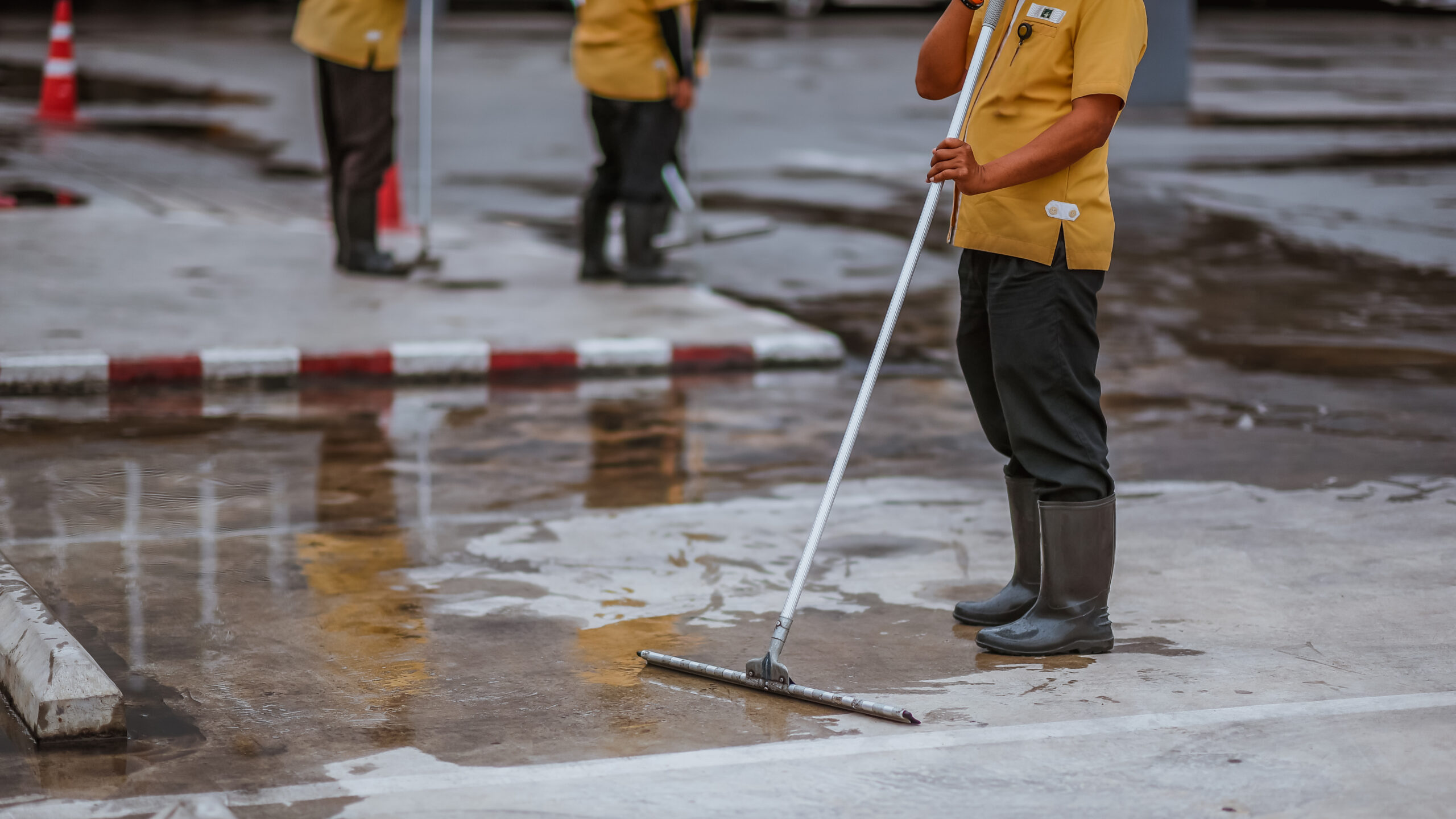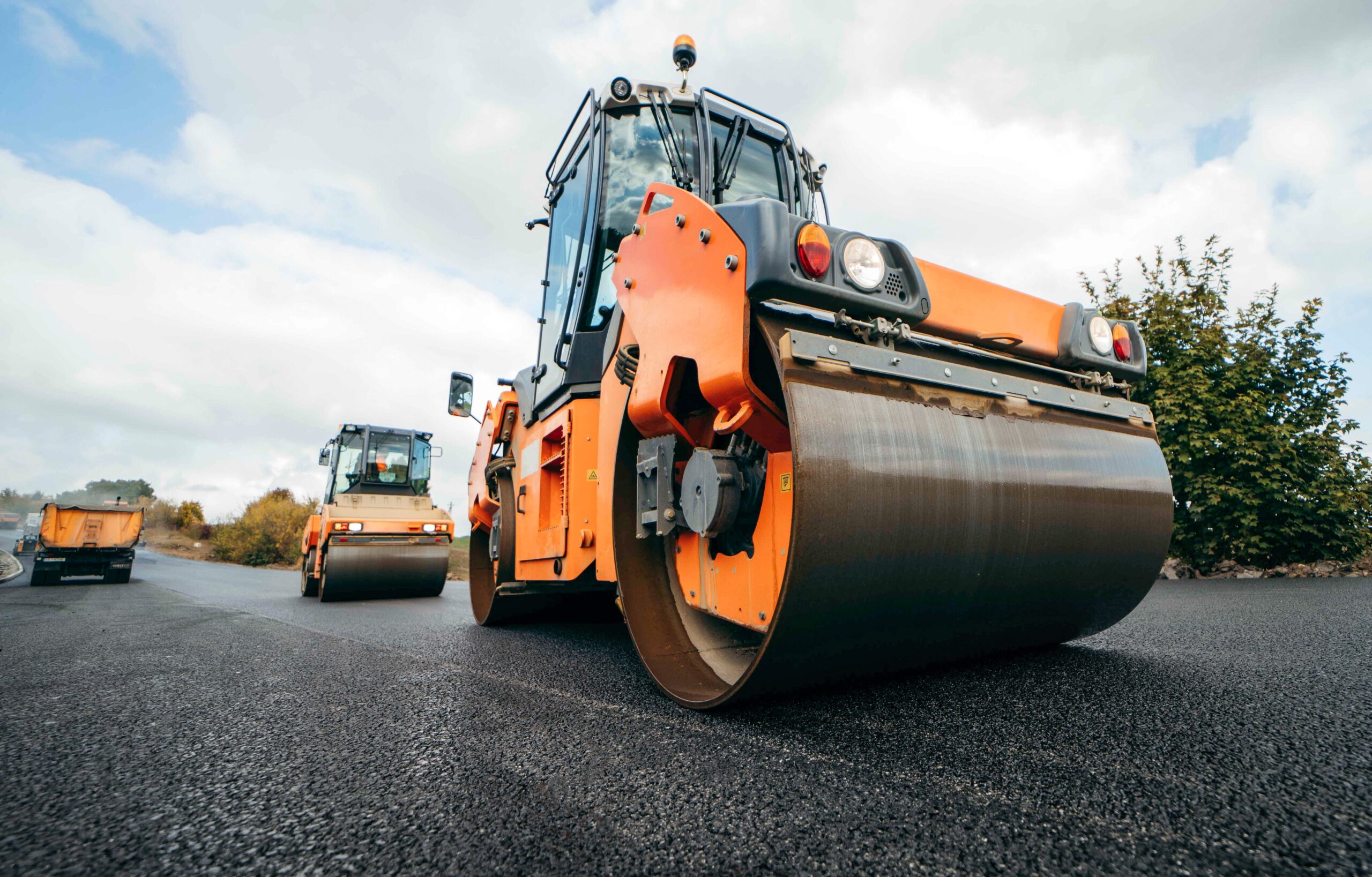Concrete solutions refer to a broad range of services and techniques involving the use of concrete to build, repair, or enhance various structures and surfaces. These solutions include everything from pouring new concrete foundations, sidewalks, and driveways to specialized work like installing curbs, gutters, stairs, and concrete pads. Its strength and longevity make it the preferred choice for both residential and commercial projects.
The industry’s overall value reached $1.82 billion in 2024, with demand mainly driven by rapid urbanization and infrastructure development worldwide, as reported by Grand View Research. Here, we will cover essential concrete services, including concrete repair, sidewalk construction, curb and gutter installation, and the building of islands, pads, and stairs, ensuring you have the key information needed to plan and execute successful concrete projects.
Why Concrete is a Popular Choice for Construction
Concrete is one of the most widely used construction materials worldwide due to its exceptional durability, strength, and versatility. It can withstand heavy loads and harsh weather conditions, requiring minimal maintenance, making it ideal for both residential and commercial projects.
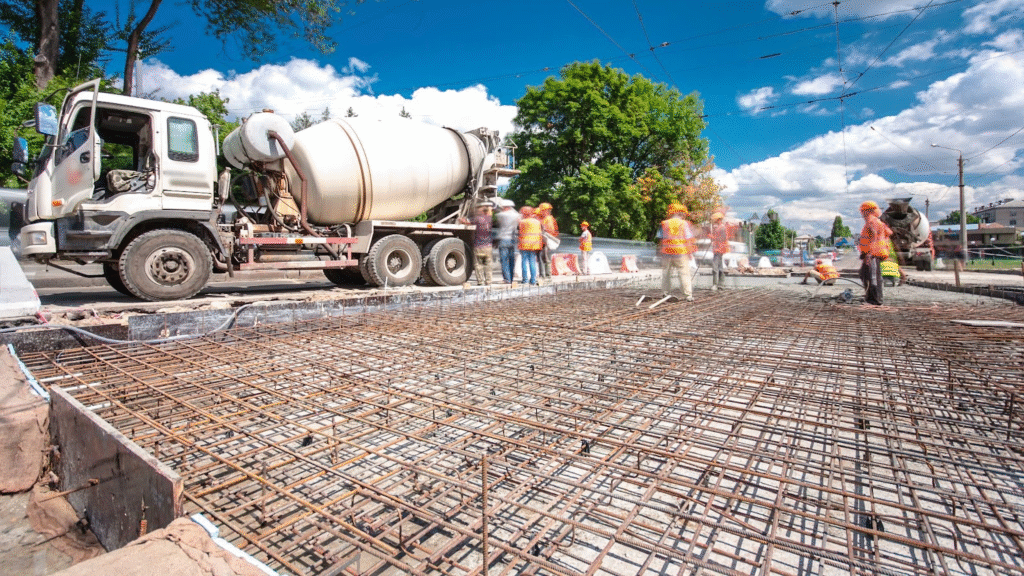
Its adaptability allows it to be molded into various shapes and sizes, supporting diverse applications like foundations, sidewalks, curbs, stairs, and decorative elements.
According to the Portland Cement Association, concrete is the world’s most widely used construction material. It is produced at an average of about four tons per person each year and makes up nearly 75 percent of all concrete used in U.S. construction. This reflects its strong presence in global infrastructure, residential, and commercial projects.
Benefits of Using Concrete For Your Projects
Some major benefits of using concrete in the projects include,
- Exceptional Longevity: Concrete structures are known for their durability and can last 50 years or more with proper maintenance. This longevity minimises the need for frequent repairs or replacements, making it a reliable investment for any project (source).
- Environmental Sustainability: Concrete is highly recyclable. Old concrete can be crushed and reused as aggregate in new construction, reducing waste sent to landfills and conserving natural resources. According to the EPA, nearly half of all construction and demolition debris in the United States is recovered and reused, with concrete and asphalt making up the largest share.
- Cost-Effectiveness Over Time: Although the upfront cost of concrete is higher than that of some materials, its low maintenance requirements and durability lead to significant savings over the structure’s lifespan.
- Versatility and Strength: Concrete can be moulded into almost any shape, making it suitable for a wide range of applications, from sidewalks and curbs to complex structural components. Its compressive strength supports heavy loads, which is why it’s used in infrastructure and commercial buildings globally.
- Resistance to Weather and Fire: Concrete’s natural resistance to extreme weather conditions and fire hazards ensures enhanced safety and durability, especially in regions prone to harsh climates or wildfires.
Concrete Repair Services: Restoring the Strength of Your Structure
Concrete repair services encompass a variety of techniques designed to restore the integrity, safety, and appearance of damaged concrete surfaces. These services become essential when signs of deterioration appear, such as cracks, moisture damage, or shifting structures, which can compromise the strength and longevity of concrete installations.
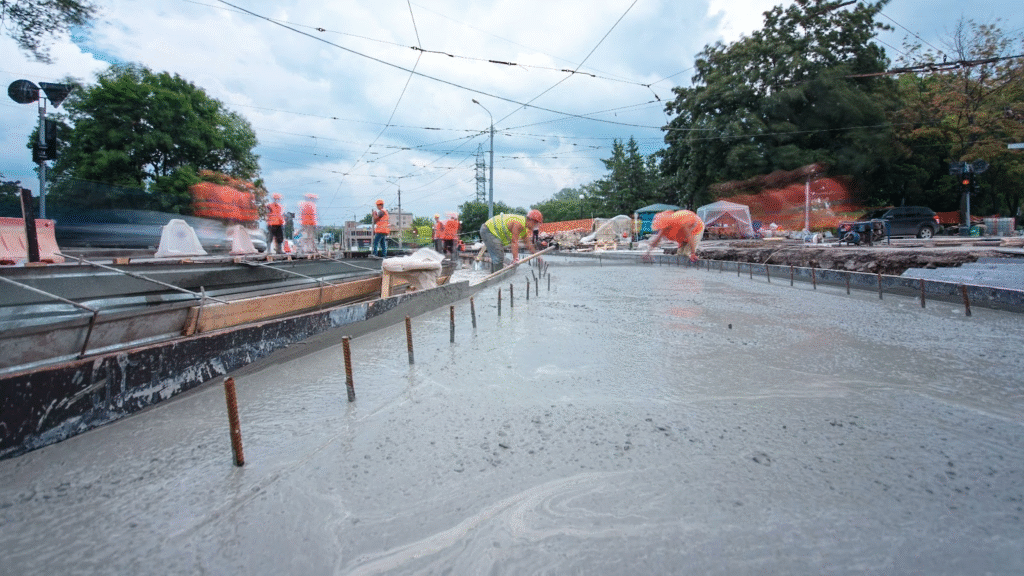
Timely repairs prevent minor issues from escalating into costly replacements, ensuring your concrete lasts longer and performs better. Whether you need repairs for sidewalks, driveways, or commercial floors, professional concrete repair extends the life of your investment and maintains structural soundness.
When to Opt for Concrete Repair
Watch for clear signs that your concrete needs attention; these include visible cracks, surface spalling, water infiltration, uneven settling, or structural movement. Ignoring these issues can lead to further damage, and ignoring concrete repairs can cost you more in the long run, as minor problems escalate into expensive repairs or even full replacements. Property owners can use this simple checklist to determine if repairs are necessary:
- Cracks wider than 1/8 inch.
- Water pooling or moisture damage.
- Surface scaling or flaking.
- Noticeable shifts or sinking in slabs.
- Rust stains from corroded rebar.
Types of Concrete Repairs
Common repair methods vary depending on the type and severity of the damage. These include:
- Crack Sealing: Filling cracks to prevent water intrusion and further deterioration.
- Patching: Repairing localized surface damage or holes with fresh concrete or mortar.
- Resurfacing: Applying a new thin layer to restore appearance and smoothness.
- Stabilization: Reinforcing or underpinning to correct structural issues.
Concrete Sidewalks: Enhancing Safety and Curb Appeal
Concrete sidewalks play a vital role in urban and residential development by providing safe, durable, and visually appealing pedestrian pathways. Beyond improving accessibility, they contribute significantly to the curb appeal of neighborhoods and commercial spaces, creating welcoming environments for residents and visitors alike.
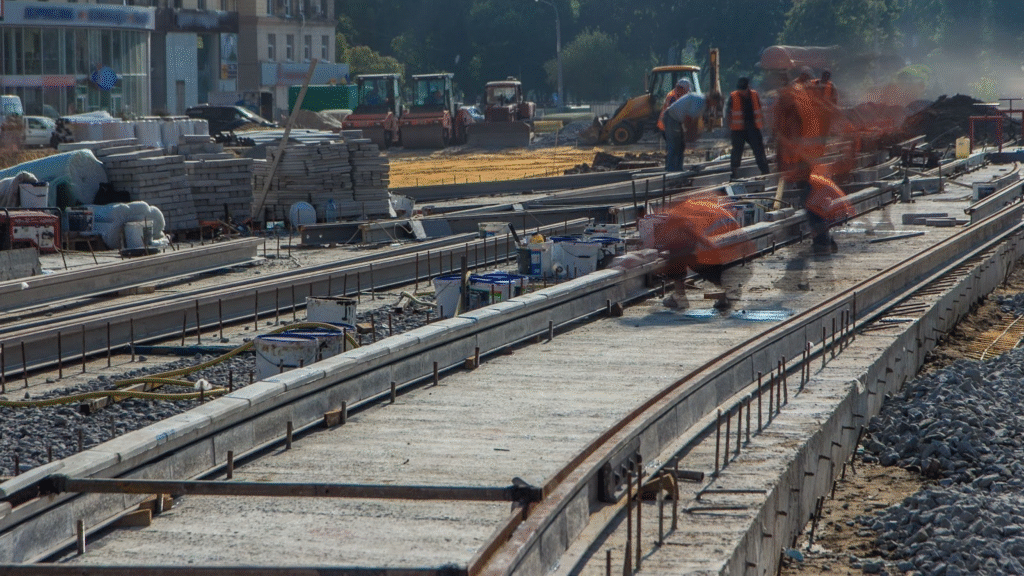
Thanks to concrete’s exceptional strength and resistance to wear and weather, these sidewalks ensure long-lasting performance with minimal maintenance. Their versatility also allows for various design options, complementing different architectural styles.
For property owners and developers seeking high-quality installations, investing in concrete sidewalk paving services ensures that these essential structures are built to last while enhancing the overall aesthetic of the area.
Benefits of Concrete Sidewalks
Some major benefits of using concrete sidewalks are,
- Durability: Concrete sidewalks are highly resistant to heavy foot traffic, weather fluctuations, and wear and tear. They can easily last for several decades without cracking or deteriorating, making them a reliable choice for long-term pedestrian pathways.
- Low Maintenance: Unlike other materials, concrete requires very little upkeep. Occasional cleaning and minor repairs are usually sufficient, which helps property owners save on costly maintenance and replacement expenses over time.
- Safety: Concrete provides a stable and slip-resistant surface that enhances pedestrian safety. Its even texture reduces tripping hazards and performs well in wet or icy conditions, making it a preferred option for sidewalks in both urban and residential areas.
- Aesthetic Versatility: Concrete can be customized in various ways to fit the design needs of a property. From stamped patterns and colored finishes to decorative borders, concrete sidewalks can enhance curb appeal while maintaining functionality.
- Cost-Effectiveness: When considering the lifespan and minimal maintenance, concrete sidewalks are a cost-effective solution. Though the initial investment may be comparable to alternatives, their longevity and durability result in lower overall expenses in the long run.
- Environmental Benefits: Concrete is an environmentally friendly material that can be recycled and reused in new construction projects. Advances in concrete technology also allow the incorporation of sustainable materials, reducing the ecological footprint associated with paving solutions.
These advantages make concrete sidewalks a wise investment for enhancing both safety and curb appeal in any urban or residential setting.
Concrete Sidewalk Construction Process: Step-by-Step Guide from Excavation to Curing
Constructing a durable and attractive concrete sidewalk involves a series of carefully planned steps to ensure long-lasting performance and safety.
Step 1: Excavation
The process begins with clearing the area where the sidewalk will be installed. Excavation removes existing soil, debris, or old pavement to create a clean, stable space. Proper excavation depth is crucial to allow for adequate base material and concrete thickness, which supports structural integrity.
Step 2: Base Preparation
Once excavated, a base layer is installed that’s typically made of compacted crushed stone or gravel. This base provides drainage, prevents shifting, and supports the concrete slab above. Proper compaction of the base material is essential to avoid settling and cracking over time.
Step 3: Pouring the Concrete
After preparing the base, concrete is mixed and poured into the formwork, shaped to the desired sidewalk dimensions. The concrete is carefully leveled and smoothed to ensure an even surface. Control joints may be added during this step to prevent uncontrolled cracking as the concrete cures.
Step 4: Curing the Concrete
The final step involves curing the concrete to achieve maximum strength and durability. Curing consists of maintaining adequate moisture and temperature conditions for several days after pouring, allowing the concrete to harden properly. Proper curing reduces surface cracks and extends the lifespan of the sidewalk.
Following these steps diligently helps deliver sidewalks that are safe, visually appealing, and built to withstand years of pedestrian traffic and environmental stress.
Concrete Curb and Gutter Installation: Improving Drainage and Structure
Concrete curb and gutter installation is an essential part of modern infrastructure that helps manage stormwater effectively by channeling rainwater away from roads, sidewalks, and properties. This prevents water from pooling, which can cause erosion, damage pavements, and create safety hazards. Besides improving drainage, concrete curbs and gutters add a clean, finished look to streets and neighborhoods, enhancing curb appeal and property value.
They also help define road edges, making streets safer for drivers and pedestrians by guiding traffic flow. Proper installation of curbs and gutters can reduce costly repairs in the future by protecting the foundation of roads and adjacent structures. For high-quality, long-lasting results, investing in curb and gutter paving services ensures that your infrastructure is both functional and visually appealing, safeguarding your investment.
Importance of Curb and Gutter Systems
Curb and gutter systems play a crucial role in urban planning by efficiently managing stormwater runoff. Some of the major reasons are,
- Curbs and gutters efficiently channel stormwater away from streets, sidewalks, and properties, helping to prevent flooding during heavy rains.
- They reduce the risk of water pooling and flooding in urban areas by directing runoff to drainage systems.
- These systems help prevent soil erosion along road edges and landscaped areas, preserving the structural integrity of pavements and nearby land.
- Proper drainage extends the lifespan of roads by minimizing water damage and weakening of the pavement base.
- Curbs and gutters help control sediment and pollutants, keeping water cleaner as it flows into storm drains and natural waterways.
- By managing water runoff effectively, they contribute to safer streets and cleaner public spaces.
- Their role in water management makes them a vital part of long-term, resilient urban planning.
Above are the primary reasons why you should use concrete curb and gutter systems.
Curb and Gutter Installation Process: Step-by-Step Guide
Installing concrete curbs and gutters requires careful planning and precise execution to ensure adequate drainage and long-lasting performance. Here is a detailed breakdown of the typical steps involved in the process:
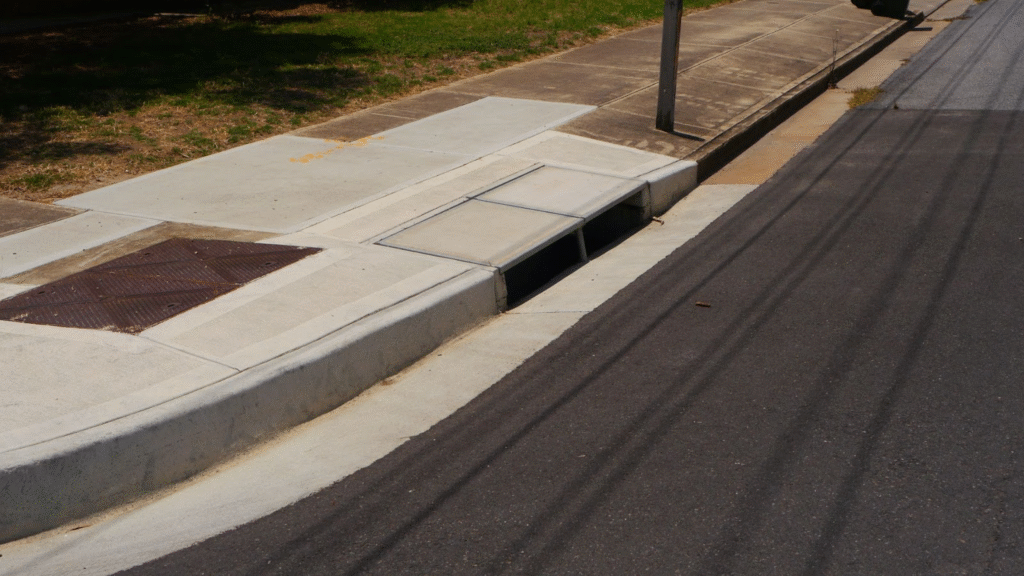
Step 1: Site Preparation and Excavation
The installation begins with clearing the area of debris and vegetation. Excavation follows, where the soil is dug out to create a stable, level base for the curb and gutter. Proper grading provides effective water flow toward drainage points.
Step 2: Setting Up Formwork
Wooden or metal forms are installed along the excavation edges to shape the curb and gutter. These forms hold the concrete in place during pouring and help achieve clean, precise lines.
Step 3: Pouring the Concrete
Fresh concrete is poured into the forms, carefully spread, and leveled. Skilled workers use tools to smooth the surface and create the desired curb and gutter profile, ensuring durability and proper drainage.
Step 4: Finishing Touches
After pouring, finishing tools are used to texture the surface for slip resistance and aesthetic appeal. Control joints may be added to prevent cracking as the concrete cures.
Step 5: Curing Process
The concrete is left to cure for several days, maintaining moisture and temperature to achieve optimal strength and durability. Proper curing reduces the risk of cracks and surface damage.
Concrete Services for Islands, Pads, and Stairs: Tailored Solutions for Outdoor Spaces
Concrete plays a key role in shaping attractive and functional outdoor environments, whether in residential gardens, patios, or commercial landscaping projects. Services focused on concrete islands, pads, and stairs help create durable, level surfaces and smooth transitions, improving both usability and curb appeal.
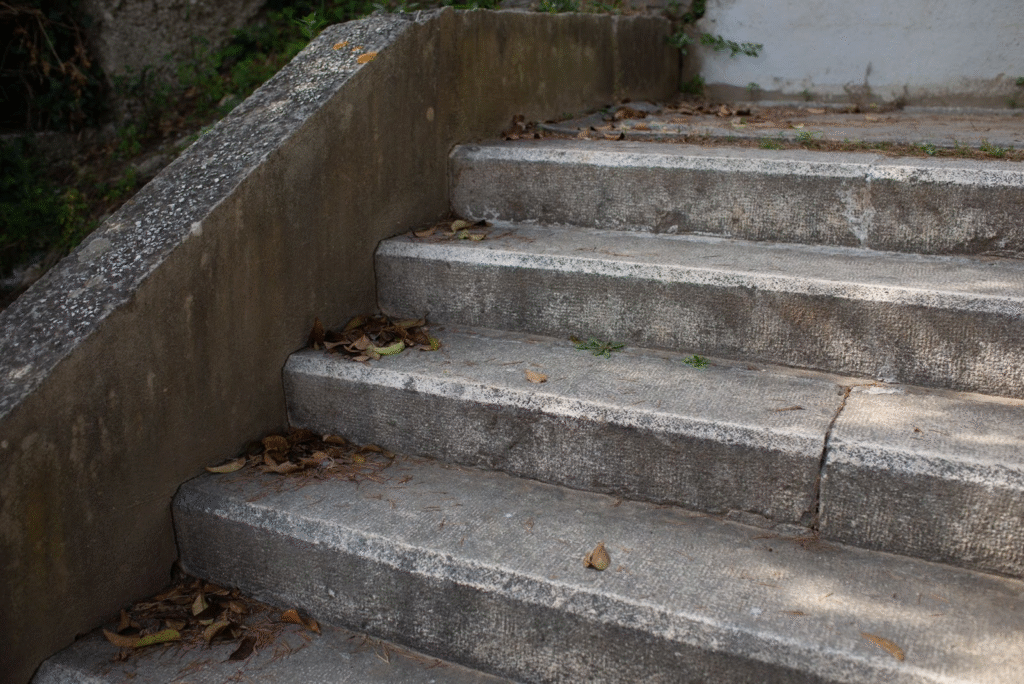
These custom solutions are designed to fit your outdoor space’s unique needs, enhancing aesthetics while ensuring long-lasting performance. Whether you’re designing a garden path, creating a patio area, or adding functional outdoor steps, Islands, Dumper Pads, & Stairs Paving Services provide the expertise to bring your vision to life with lasting quality.
Concrete Islands for Landscaping
Concrete islands serve as excellent focal points in gardens or commercial landscapes. They provide stable, level platforms perfect for plantings, decorative features, or seating areas. Using concrete for these islands ensures durability against weather and foot traffic.
These islands help organize outdoor space effectively, making your garden or commercial area more visually appealing and functional.
Concrete Pads and Stairs for Functional Outdoor Spaces
Concrete pads are ideal for creating solid foundations for outdoor structures like sheds, gazebos, or seating areas, offering stability and weather resistance. Meanwhile, concrete stairs provide safe, sturdy access between different levels of your yard or commercial property.
Both pads and stairs made from concrete are low maintenance and built to last, ensuring your outdoor spaces remain accessible and attractive for years to come.
Key Considerations Before Starting Concrete Projects
Before beginning any concrete project, thorough planning and preparation are crucial to ensure the finished work meets your expectations and stands the test of time. Proper site assessment, selecting the right materials, and budgeting carefully can save time and money while avoiding common pitfalls.
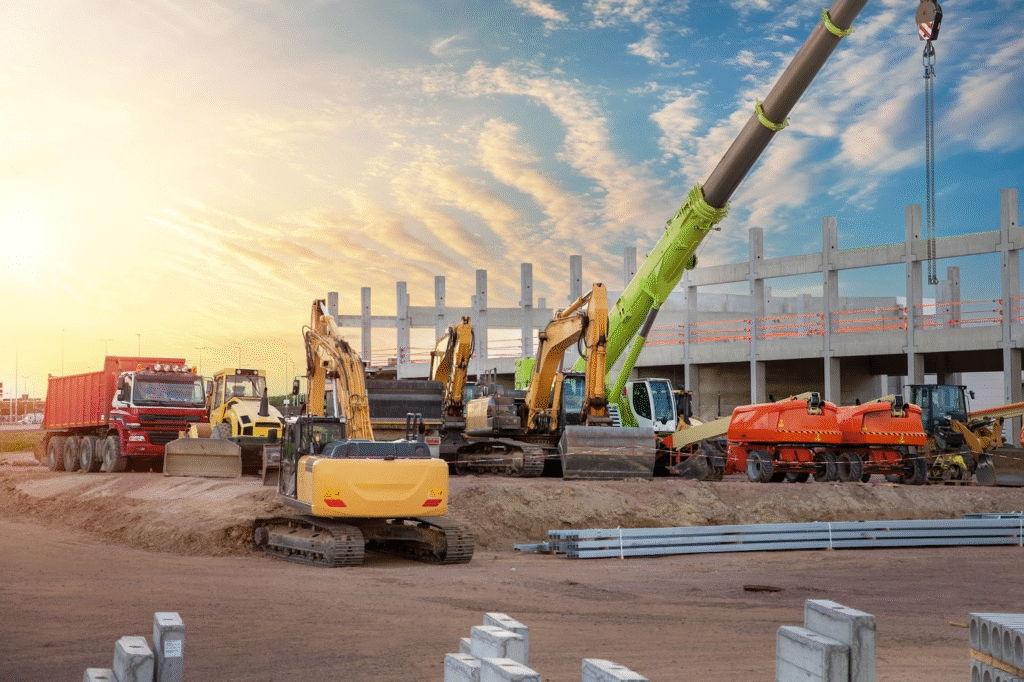
Paying attention to factors like drainage, load-bearing needs, and the desired surface finish will help create a durable, functional, and visually pleasing result. Let’s discuss some primary considerations before starting concrete projects.
1. Site Assessment and Preparation
A comprehensive evaluation of the project site lays the groundwork for success. This includes clearing debris, leveling the ground, and ensuring good drainage to prevent water pooling, which can weaken concrete over time. Soil stability should also be checked, as unstable or poorly compacted soil may require additional reinforcement or base materials to support the concrete structure.
2. Selecting the Right Concrete Mix
Choosing the appropriate concrete mix is vital for durability and performance. Factors such as the project’s purpose, environmental exposure, and load requirements influence this decision.
For example, high-strength mixes may be needed for driveways or stairs, while decorative projects might use colored or stamped concrete. Understanding the properties of different mixes, including additives or fiber reinforcements, helps tailor the concrete to your specific needs.
3. Budgeting for Concrete Projects
Concrete projects involve costs beyond just materials and labor. It’s essential to budget for site preparation, formwork, finishing, and potential permits or inspections. Comparing the costs of various mix types and considering long-term maintenance expenses will provide a clearer financial picture.
Careful planning and attention to these key considerations will set your concrete project up for lasting success, ensuring a durable, functional, and attractive result you can rely on for years to come.
Environmental Considerations in Concrete Construction
Concrete construction has a significant environmental footprint, but by adopting sustainable practices, its impact can be greatly reduced. Incorporating recycled materials, minimizing waste, and using energy-efficient techniques help make concrete projects greener and more eco-friendly.
Recycling Concrete Waste
Concrete waste generated during demolition or excess material from projects doesn’t have to end up in landfills. It can be crushed and reused as aggregate for new concrete or road base, reducing the demand for virgin materials and lowering environmental impact. Recycling concrete helps conserve resources and supports a circular construction economy.
Energy-Efficient Concrete Solutions
Energy efficiency in concrete construction goes beyond recycling. Using eco-friendly concrete mixes, such as those incorporating supplementary cementitious materials like fly ash or slag, reduces the carbon footprint.
How Long Does Concrete Construction Take?
The timeline for concrete construction projects varies depending on the size and complexity of the job, site conditions, and weather. Understanding these factors helps set realistic expectations for project completion and scheduling.
Timeframe for Small Concrete Projects
Smaller concrete projects, such as sidewalk installations or concrete pads, usually take 1 to 3 days to complete. This includes excavation, form setting, pouring, and initial curing. For example, a standard 4-foot wide sidewalk section can often be poured and finished within a single day, with a curing time of 24 to 48 hours before light foot traffic is allowed.
Timeframe for Large Concrete Projects
Larger projects, such as curb and gutter installations or complex outdoor concrete services like patios with stairs, require more time, often 3 to 7 days or more. These projects involve extensive site preparation, formwork, precise pouring, and longer curing periods to ensure durability.
Additionally, weather plays a crucial role in repair timelines; colder or wet conditions can significantly slow curing and bonding. As a guideline, the Penn State College of Engineering recommends curing concrete for at least 7 days at temperatures above 40 °F (5 °C) to achieve roughly 70 % of its design strength, while full strength typically develops over 28 days under optimal conditions.
Cost of Concrete Services: What to Expect

Understanding the cost of concrete services helps homeowners and contractors plan their budgets effectively. Costs vary widely depending on the type of service, including repair, sidewalk installation, curb and gutter work, and the construction of islands, pads, and stairs.
- Concrete Repairs: These typically cost between $3 to $10 per square foot, depending on the extent of damage and repair method used. Minor crack sealing is cheaper, while extensive patching or resurfacing costs more.
- Concrete Sidewalks: Expect to pay around $6 to $12 per square foot for new sidewalk installation. This range covers excavation, forming, pouring, and finishing.
- Curb and Gutter Installation: More specialized, curb and gutter work generally costs between $15 and $30 per linear foot, reflecting the precision and labor involved.
- Islands, Pads, and Stairs: These customized concrete features can vary widely, but pads and stairs usually range from $8 to $25 per square foot, depending on design complexity and finish.
Factors Affecting Concrete Service Costs
Several key factors influence the overall cost of concrete services. Understanding these can help you better estimate your project budget:
- Project Size and Scope: Larger areas require more materials and labor, increasing costs.
- Material Quality and Type: Higher-grade concrete or specialty mixes (e.g., decorative, high-strength) cost more.
- Site Preparation: Difficult terrain, poor soil conditions, or extensive demolition increase labor and equipment needs.
- Labor Rates: Costs vary by region based on local wage standards and contractor availability.
- Design Complexity: Custom shapes, finishes, or reinforcements add time and expense.
- Permits and Regulations: Some projects require permits or inspections, which incur additional fees.
How to Estimate the Cost of Concrete Projects
Estimating concrete project costs accurately involves considering multiple factors:
- Measure the Area: Calculate the total square footage or linear feet, depending on the service type.
- Choose the Concrete Type: Decide on standard or specialty mixes based on project needs.
- Assess Site Conditions: Evaluate if additional prep work like grading, excavation, or demolition is required.
- Get Multiple Quotes: Contact local contractors to compare labor and material costs.
- Include Additional Expenses: Factor in permits, reinforcement materials (like rebar), and finishing options.
- Plan for Contingencies: Budget extra for unforeseen issues such as site obstacles or weather delays.
Using these steps will give you a clearer picture of your project’s likely cost, helping you plan effectively and avoid surprises.
Maintenance Tips for Concrete Structures
Proper maintenance is essential to keep concrete structures like sidewalks, curbs, and pads durable and looking their best for years. Regular care helps prevent costly repairs and extends the lifespan of these surfaces, ensuring safety and aesthetic appeal over time.
Sealing your concrete surfaces provides the first line of defense against damage, but regular inspections and timely repairs are equally essential to maintain that protection over time.
Sealing Concrete Surfaces
Sealing concrete is a critical step in maintenance. A quality concrete sealant acts as a protective barrier that prevents moisture penetration, reduces staining from oils and chemicals, and guards against weather-related damage like freeze-thaw cycles.
Regular Inspections and Repairs
Routine inspections are vital to catch minor issues, such as small cracks or surface wear. Promptly addressing these signs through minor repairs like crack sealing or patching helps maintain the structural integrity of concrete surfaces and prevents further deterioration. Scheduling regular check-ups keeps your concrete safe, durable, and cost-effective in the long run.
FAQs
How long does concrete last before it needs repair?
Concrete typically lasts 25 to 50 years, depending on usage and environmental conditions. Regular maintenance and timely repairs can significantly extend its lifespan and prevent costly replacements.
Can concrete be repaired if it cracks?
Yes, cracks in concrete can be repaired using various methods such as epoxy injection, patching, or resurfacing, depending on the severity and type of crack. Early repair prevents further damage.
How much does it cost to install a concrete sidewalk?
The cost to install a concrete sidewalk generally ranges from $6 to $12 per square foot, varying based on project size, location, and finish options.
Is it possible to install concrete curbs and gutters in all climates?
Concrete curbs and gutters can be installed in most climates, but cold regions may require special mix designs and curing methods to prevent cracking due to freeze-thaw cycles.
Get Your Concrete Project Started
Concrete solutions offer durable, versatile, and cost-effective options for enhancing your property, including sidewalks, curbs, pads, and repairs. Proper planning and professional execution ensure lasting results that protect your investment and improve curb appeal.
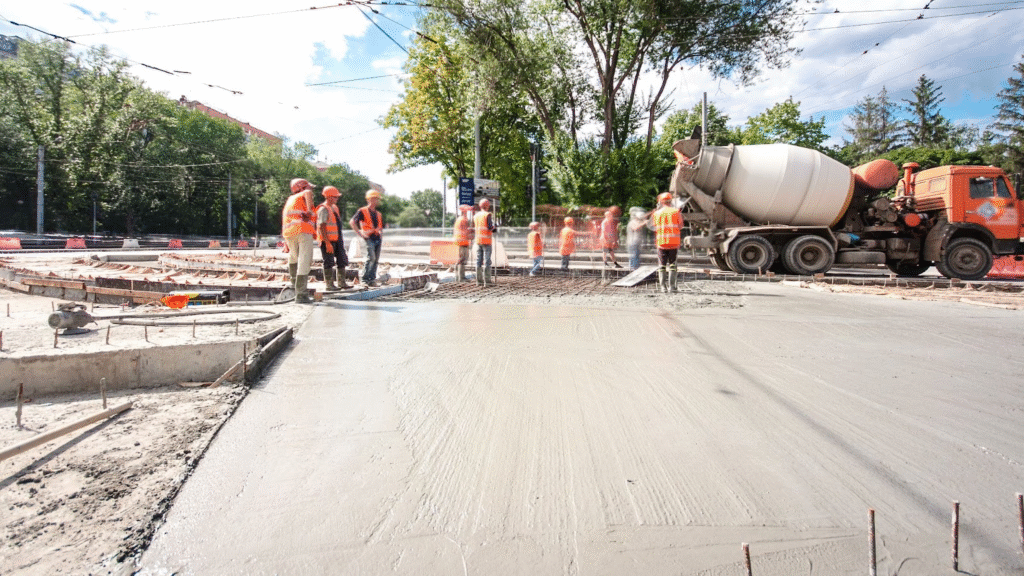
If you’re considering a new concrete installation or need expert repair services, contact us today for a consultation or free estimate. Let our skilled team help you bring your project to life with quality craftsmanship and reliable service.



